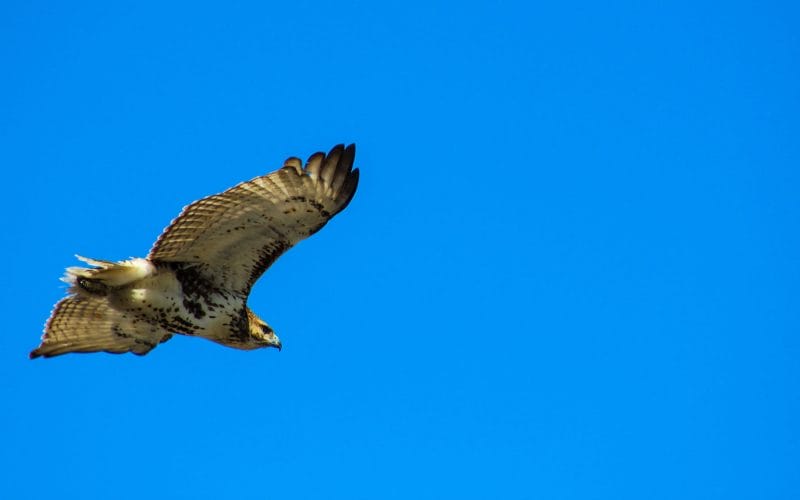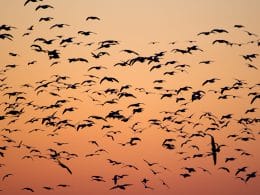
Birds all over the world have been seen taking baths in birdbaths with water. But every now and again, when you go out to nature, you will notice some birds taking baths in a sandy, dusty place without water. What is a dust bath, why do birds love them, and how can you make one? Do you know how to build a dust bath for birds?
In this article, we tackle these burning questions!
What is a Dust Bath?
Before learning how to build a dust bath for birds, let’s learn what a dust bath is. A dust bath (sand bath) is when birds use the same movements they would use in water, but with sand. Some birds love bathing in a dry, dusty, and sandy place. It almost looks a bit like its frantic movements, kicking up dust, wading, and seems like it is in distress.
Would you like to attract more wild birds to your garden? An addition of a dust bath to the normal birdbath and feeder is highly recommended. It does seem that a dust bath is just as important to some species as a water bath is to others.
Bathing in the dust is a maintenance behavior in some species. This dust bath is used to keep themselves in tip-top shape.
Why Do Birds Use Dust Baths?
There are hundreds of different types of bird species that use birdbaths. But why a dust bath? Sand bathing is used to maintain their feathers and plumage. The oil glands on the feathers secrete an oil, and the dust helps absorb oil to clean the feathers. They discard and expel this oily dust mix with dry skin and other debris.
Author Note: They try to fling the dust debris into the air, ruffling feathers to get the dust particles onto the skin. This is usually followed by some preening, more ruffling, and shaking of feathers.
The frequency of dust bathing depends on the species, time of year, and state the feathers are in. Feathers are very intricate ‘things’ that need constant maintenance for insulation and flight.
Another beneficial attribute to dust bathing is it gets rid of parasites and pests as well. Some sparrows have often taken dust baths after a water bath. It is believed that it does this for its anti-parasitic attributes.
Birds stay close to the ground when taking a dust bath, creating something of a dust ball with its vigorous movements.
Birds without uropygial glands keep their feathers dry and healthy through regular dust bathing.
Chicken farmers frequently use dust baths for their chickens. Usually, free-roaming chickens would find a specific place with soft, dry, dusty soil. When conditions are right, they will go there for a bit of dirt spa session.
Lice and mites are two external problems that can cause itching, anemia, feather loss, and even death. By building a dust bath, they can have regular dust baths, which solves these problems naturally on mild infections. The dust suffocates and dehydrates these mites and lice, causing them to die and fall off.

Which Birds Use Dust Baths?
From raptors, some kestrels, larks, thrashes, thrushes, house sparrows, hens, ostriches to emus, many birds use dust baths. In hot and dry areas where water is not in such abundance, it seems that dust and sand are used as a substitute sometimes.
The California quail is a very social species of bird. They will have social dust baths together every day. They seem to prefer freshly turned soil, and when they find it, they have a wiggle of a time.
And do not forget the domestic chicken. Dust baths are essential to their health and well being.
Even some mammals are known to have dust baths as well.
How to Build a Dust Bath in Your Yard

The first thing to think of is where to place it. It needs to be in the full sun, so it’s probably best to have a look at the south side of your garden. Rain is another thing to consider. You could cover it with a plastic cover when it rains, and if you cover it every night, you won’t have the neighbor’s cat using it as a litter box.
Using a bit of timber, wire mesh, landscaping material, and some screws, you can easily build one yourself.
Hardware List
- 4 pieces of 4″ x 2″ inch timber at lengths of 40″ inches each.
- 1 piece of expanded wire mesh cut to 40″ x 40″ inches
- 1 piece landscaping weed control material cut to 40″ x 40″ inches
- 4 bricks
- 1 pack of 4″ inch timber deck screws
- River or sharp sand
- 1 bag of 1″ inch nails
Instructions
Clear the space of weeds and grass where you want to place the dust bath.
Place 2 pieces of timber 90 degrees to each other. Using a cordless drill, drill two pilot holes and screw in the 4″ inch screws.
Do the same with the other two pieces.
Add the two assembled pieces together to form a square and fasten them together.
Place the wire mesh on top of the square structure. Fasten it to the frame with the 1″ inch screws.
Turn the structure around.
Place the landscaping material inside the box and fasten it with 1″ inch screws.
Place the bricks under the four corners.
Take two spades of garden soil and run it through a builder’s sieve.
Author Note: Add the sharp sand into the box and fill until 2/3 full and add the sieved soil. Mix together. If you have some cold ashes from a fire, add half a spade to the sand and mix well.
All done and ready for the bird’s dirt bath time.
How to Make a Cover for Your Dust Bath

As mentioned earlier, it is a good idea to make a waterproof cover for your dust bath. It not only protects you from it being a kitty litter trap, but it also keeps the dust-dry for the birds to kick it up.
Another simple way to make a dust bath would be to try and purchase a plastic container of the same size.
Instructions
Drill about 20 small holes in the bottom of the container.
Fill with loose dusty, sandy soil with half a spade of wood ash.
Place it in a sunny place and try to keep it dry.
By elevating it off the ground a little bit, it will help it dry out properly if it did get wet.
Another way to make a dust bath for free-range chickens would be to observe where they already have a dust bath place. Take four logs of about 5″ inches thick and about 40″ inches long and lay them in a square.
Using a pitchfork or spade, turn the soil over and make it “fluffy.” Add a bag of sharp sand and mix it all together. In the beginning, when they first see it, they might be a bit skeptical at first. Place a little bit of food on the edge of the log and coax them to the sandy area. Before long, they will be happily flapping, fluffing, kicking, ruffling, and preening in a cloud of dust.
Author Note: By adding a bird feeder and a birdbath to your dirt bath, you can create a bit of a bird oasis in the back of the garden. It is advisable not to put the dust bath too close to the birdbath and feeder. This is to avoid cleaning sand out of them continuously as they kick up a little dust storm.
Utilizing Branches
Putting up a few dead tree branches would create a few perches the birds can utilize between baths and feeding. Let the grass grow and go to seed in the area where the branches lay. This will attract seed-eating birds to that area as well.
Keep your feeders topped up and add some crushed eggshells to a separate platform feeder.
To prepare the crushed eggshell calcium feed, wash the eggs and bake them in an oven for 20min at 350 degrees Fahrenheit. Let it cool and crush it up a bit. This type of calcium addition is necessary for roosting and nesting female birds.
Keeping your bird oasis area in tip-top shape will attract more birds. A dust bath is definitely a bird attraction to certain types of birds.
Conclusion
Birds that frequent dust baths do so to keep healthy and happy. This maintenance behavior is essential for keeping parasites like mites and lice in check.
Birds also use dirt baths to keep their oil levels on their feathers in check. The dust particles bind to the oil and, with a bit of preening and ruffling of the feathers, get them clean and maintained.
The dust bath is an essential functional feature. With the birdbath, perches, grassy patch going to seed and feeders, you will be able to attract more birds to your area than you previously could. We hope you enjoyed this article on how to build a dust bath for birds.
If you want more wild birds in a bird oasis, add a dust bath!
Fly high friends!
FAQ
Yes and they are an important part of their maintenance. If you keep chickens, you should provide a dust bath for them.
No, other pet and domestic birds enjoy dust baths. Peafowl, ostrich and parrots all like them
No. It is mainly song birds and domesticated birds.











Thanks, Will!! I’m glad to see that people make dust baths for birds. I have a wren family in my backyard and they look like they could really use a nice, reliable dust bath, so I searched online and found your write-up. I have ordered some materials and am excited to try it. They keep laying down flat on the top of my sunny grill cover near their water bath, ruffling their feathers – I think to dry them out quicker. So that gave me the idea to make them a dust bath. My backyard is too wet most of the time for them. Thanks again!!